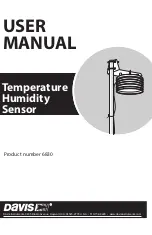
11 of 12
STEP FIVE
The main control functions on the PC705-2 can be tested by pressing and holding the UP button. While the UP button is pressed, the
boiler and the system pump are turned on, and the variable speed injection pump is turned to 100% of its output speed. Once the UP
button is released, the control returns to normal operation.
STEP SIX
As in any troubleshooting procedure, it is important to isolate a problem as much as possible before proceeding. The Error Messages
greatly simplify troubleshooting of the PC705-2. When the control displays an error message, identify the fault from the look-up table
on page 12 and follow standard testing procedures to confirm the problem. If you suspect a wiring fault, return to step three and
carefully check all external wiring and wiring connections.
Sensor and Internal Faults
• If an outdoor sensor fault occurs, the PC705-2 will assume a fixed outdoor temperature of 32°F (0°C) and will target the appropriate
supply water temperature. An error message is displayed.
• If a supply sensor fault occurs, and a boiler sensor is installed, the PC705-2 operates the variable speed at an output of 15% and
displays an error message. If a supply sensor fault occurs, and a boiler sensor is not installed, the PC705-2 operates the variable
speed at an output of 30% and displays an error message.
• If a boiler sensor fault occurs, the PC705-2 operates the boiler as if the sensor was not installed and displays an error message.
If the sensor was deliberately removed, remove power from the control to clear the error message.
• If an EEPROM fault occurs, the PC705-2 stops operation until all the settings are verified. An error message is displayed.
Adjustment of Settings
• If the outdoor temperature is cold and the rooms are cold, increase the MIX DSGN setting by 5°F (3°C) per day.
• If the outdoor temperature is near the WWSD temperature and the rooms are cold, increase the MIX Start setting.
Testing the Sensors
A good quality test meter capable of measuring up to 5,000 kΩ (1 kΩ = 1000 Ω) is
required to measure the sensor resistance. In addition to this, the actual temperature
must be measured with either a good quality digital thermometer, or if a thermometer
is not available, a second sensor can be placed alongside the one to be tested and the
readings compared.
First measure the temperature using the thermometer and then measure the resistance of
the sensor at the control. The wires from the sensor must not be connected to the control
while the test is performed. Using the chart below, estimate the temperature measured
by the sensor. The sensor and thermometer readings should be close. If the test meter
reads a very high resistance, there may be a broken wire, a poor wiring connection or
a defective sensor. If the resistance is very low, the wiring may be shorted, there may
be moisture in the sensor or the sensor may be defective. To test for a defective sensor,
measure the resistance directly at the sensor location.
Do not apply voltage to a sensor at any time as damage to the sensor may result.
Troubleshooting
Temperature
Resistance
Temperature
Resistance
Temperature
Resistance
Temperature
Resistance
°F
°C
Ω
°F
°C
Ω
°F
°C
Ω
°F
°C
Ω
-30
-20
-10
0
10
20
30
40
50
60
70
80
90
100
110
120
130
140
150
160
170
180
190
200
-34
-29
-23
-18
-12
-7
-1
4
10
16
21
27
32
38
43
49
54
60
66
71
77
82
88
93
234,196
165,180
118,018
85,362
62,465
46,218
34,558
26,099
19,900
15,311
11,883
9,299
7,334
5,828
4,665
3,760
3,050
2,490
2,045
1,689
1,403
1,172
983
829
Ω
Ω
STEP SEVEN
• Install the wiring cover over the wiring chamber and secure it with the screw provided.
• Place the front cover on the control and snap it into place.
• It is important to explain the operation of this control within the system to the end user, and to anyone else who may be operating
the system.






























